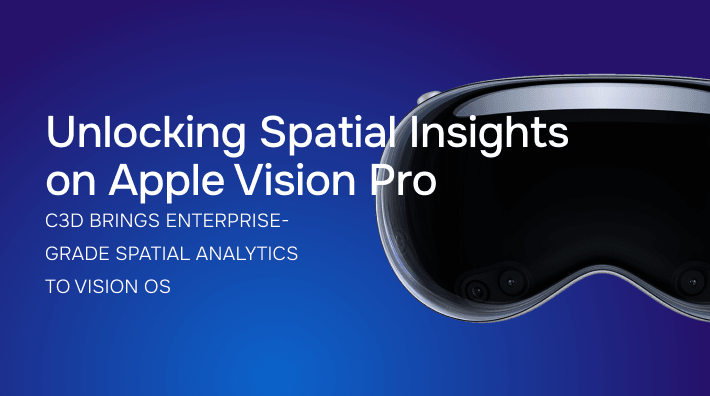Unlocking Spatial Insights on Apple Vision Pro




Cognitive3D brings enterprise-grade spatial analytics to visionOS
Apple Vision Pro introduces a new era of spatial computing — where digital content lives naturally within the physical world. For developers and organizations building on visionOS, understanding how users interact within 3D space is essential for delivering intuitive, high-performing experiences.
That’s where Cognitive3D comes in. Our platform now supports Apple Vision Pro, enabling developers to capture, visualize, and analyze behavior within mixed-reality environments ��— turning spatial interactions into measurable evidence.
Why Analytics Matter in Spatial Computing
In traditional apps, analytics reveal what users click, how long they stay, and where they convert.
In spatial experiences, the questions are different — and deeper:
- Where do users look first?
- How do they move through space?
- Which objects attract attention, and which go unnoticed?
- Do users complete tasks efficiently — or get stuck along the way?
Spatial analytics unlock these answers. They transform intuition into data-driven design decisions, helping teams refine usability, streamline workflows, and prove ROI for immersive deployments.
The Cognitive3D + visionOS Integration
Cognitive3D’s visionOS SDK brings the power of our XR analytics platform to Apple Vision Pro developers, both natively through Swift and through our integration with Unity.
Key capabilities include:
✅ Native SDK for visionOS (Swift) — integrate Cognitive3D directly into your spatial app.
✅ Scene uploads — visualize analytics within your 3D environment by uploading meshes and geometry.
✅ Head direction tracking — analyze where users focus in space, using headset orientation as a proxy for gaze.
✅ Dynamic object tracking — attach analytics to interactive or moving objects in real time.
✅ Custom events & session metadata — log specific interactions and segment by user type, environment, or test variant.
✅ ExitPolls — collect user feedback directly within the headset experience.
Note: Apple currently does not expose eye-tracking data for third-party developers on visionOS. Cognitive3D uses headset direction as an approximation for gaze — ideal for most spatial experience use cases.
Getting Started with Cognitive3D on Vision Pro
Developers can set up analytics in just a few steps:
- Add the SDK – Install the Cognitive3D visionOS package in Xcode via Swift Package Manager.
- Initialize a session – Start a Cognitive3D session when your app launches.
- Upload your scene – Upload meshes and geometry to the Cognitive3D dashboard for contextual analytics.
- Track interactions – Tag dynamic objects and record user events throughout the experience.
- Replay and analyze – View spatial heatmaps, gaze replays, and task flow analytics on the Cognitive3D dashboard.
➡️ Get started with Cognitive3D for visionOS →
Built for Enterprise-Scale Insights
Cognitive3D has powered over 181 million minutes of analytics across XR devices and platforms — from immersive training to simulation and product design.
By bringing those capabilities to Apple Vision Pro, enterprises can now:
- Validate spatial UX design with quantitative behavior data.
- Measure training effectiveness in 3D environments.
- Optimize user flow and attention in complex mixed-reality interfaces.
- Centralize analytics across multiple XR platforms through a single, secure data layer.
Our goal is to make analytics a foundational layer of the XR stack — independent, interoperable, and enterprise-ready.
Looking Ahead
As visionOS evolves, so will the opportunities to measure and improve spatial experiences. Future versions of Cognitive3D’s SDK will continue expanding capabilities as Apple unlocks deeper APIs for developers — including potential support for eye tracking.
With Cognitive3D, organizations can confidently scale their immersive strategies on Apple Vision Pro, backed by data that turns spatial behavior into actionable insight.
Ready to Get Started?
Visit our documentation to explore our developer resources, or contact us to see how Cognitive3D can help you bring measurable insights to your visionOS deployment.